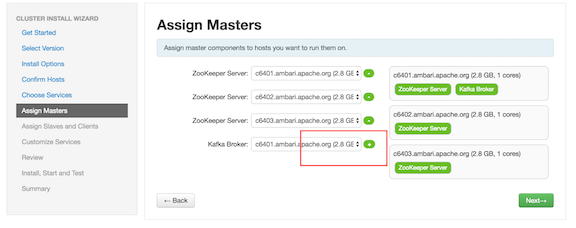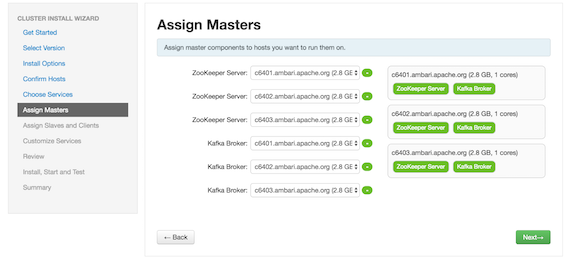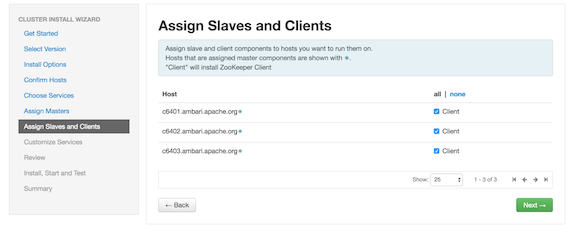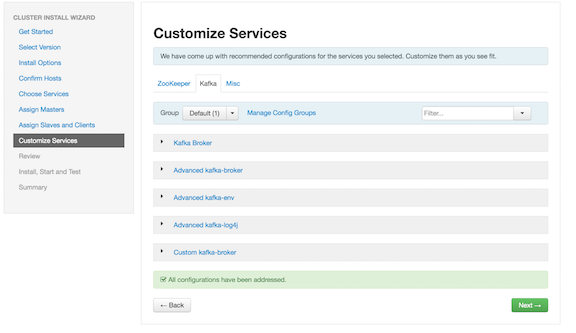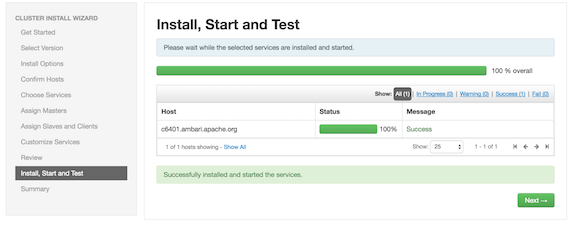Installing Kafka Using Ambari
After Kafka is deployed and running, validate the installation. You can use the command-line interface to create a Kafka topic, send test messages, and consume the messages.
After Kafka is deployed and running, validate the installation. You can use the command-line interface to create a Kafka topic, send test messages, and consume the messages. For more information, see Validate Kafka in the Non-Ambari Cluster Installation Guide.




